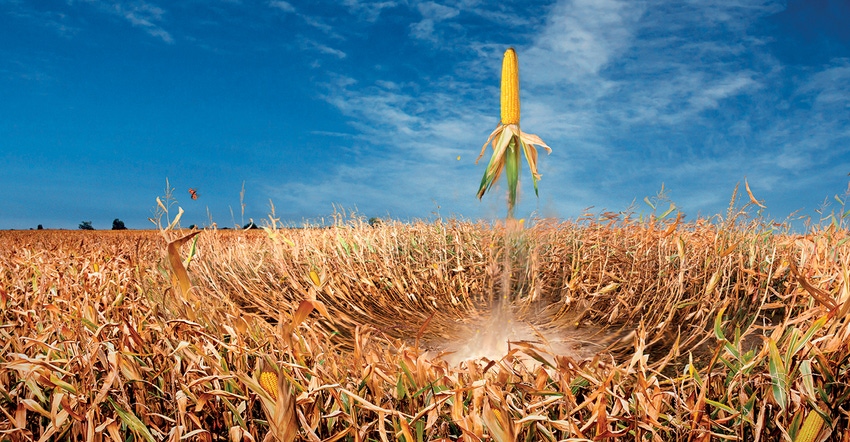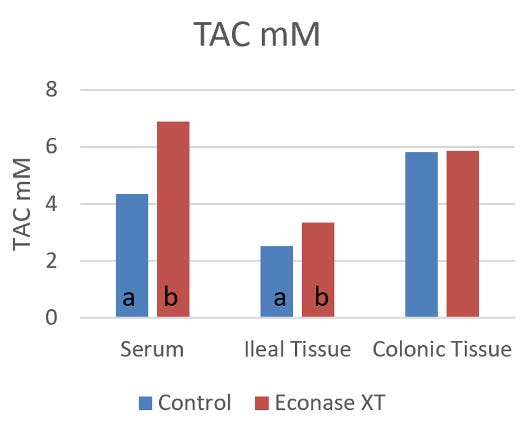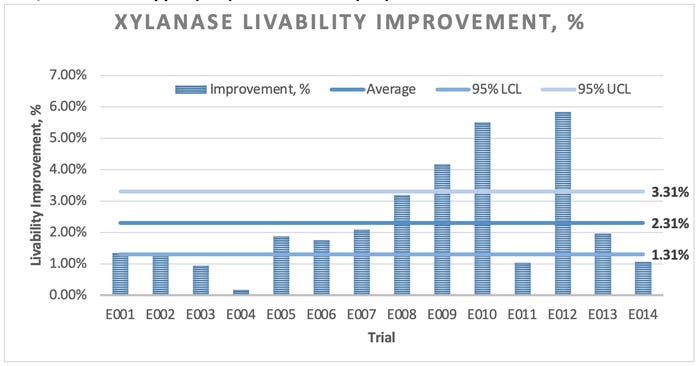The use of xylanase in finishing pigs has an indirect benefit on gut functionality benefiting the producer by improving feed efficiency.
November 8, 2021

Sponsored Content
Authored by Laura Merriman, Ph.D. and Tom Weber, Ph.D. of AB Vista
Average mortality among finishing pigs continues to increase (2012, 4.58%; 2021, 5.15%; Metafarms, 2021). Swine production systems are experiencing several health challenges currently, which is likely leading to this trajectory. Although using enzymes to breakdown non-starch polysaccharides does not address the pathogen loads directly, using a xylanase can indirectly modify the gut environment through the breakdown of long-chain arabinoxylans to small-chain xylo-oligosaccharides (XOS). These small-chain xylo-oligomers are fermented by the microbiota to produce small-chain fatty acids (SCFA), such as butyrate, that improve gut functionality, nutrient utilization, pig productivity, and livability.
Xylanase Improves Nutrient Digestibility and Energy Release in Finishing Pigs.
Recent research (Petry et al., 2020) showed the effectiveness of xylanase on nutrient digestibility in finisher pigs fed a corn-based, high-fiber diet. The addition of xylanase resulted in improved nutrient digestibility as measured by an increase in gross energy, dry matter, and NDF digestibility, with an estimated ME release of 120 kcal/kg and 100 kcal/kg NE release. Based on this energy release, it would be expected that the addition of a xylanase would improve finisher pig feed efficiency. An internal summary of eight finisher pig trials, whereby a xylanase (Econase XT) was added at 16,000 BXU/kg over the top of a diet, resulted in an improved weight-corrected feed:gain of 4 points (2.51 v 2.47).
Xylanase Supports Gut Integrity and Antioxidant Status
Further work on xylanases in finisher pigs highlighted the benefit that xylanase addition can have on intestinal integrity as measured through greater levels of total antioxidant capacity (TAC) in the intestinal tissue and systemically (Fig. 1). One potential mechanism is the improved bioavailability of ferulic acid by exposing the feruloylated arabinoxylan oligosaccharides to ferulic acid esterase produced by the microbiota. Ferulic acid is a powerful antioxidant that reduces the effect of free radicals. It is recognized that higher levels of oxidative stress can increase gastrointestinal cell permeability and that improving antioxidant status helps mitigate this negative effect on the animal, improving gut functionality. This is supported by pigs supplemented with xylanase having a greater expression of tight junction proteins (Fig. 1), which suggests an enhanced barrier integrity. Improving the gut barrier integrity is key to minimizing the paracellular crossing of microorganisms, decreasing inflammation, and potential infection of the animal.
Figure 1. The effect of Xylanse Supplementation on Tight Junction Protein Gene Expression and Total Antioxidant Capacity (TAC)


Reference: Adapted from Petry; 2020
Xylanase Beneficially Modulates Microbiota in the Gastrointestinal Tract Increasing Volatile Fatty Acid Production
Xylanases hydrolyze fiber into smaller-chain XOS. This stimulates the bacteria in the lower intestinal tract to utilize fiber and leads to a shift in bacterial populations that favor fiber fermentation. Petry et al., (2020) demonstrated that the addition of xylanase modified the colon bacteria, increasing butyrate producers (Bifidobacterium sp, Faecalibacterium sp), lactate producers (Lactobacillus sp, Lachnospiraceae sp), and fiber fermenters (e.g., Ruminococcus sp, Prevotella sp) all linking together to an increase in SCFA production (82.8 v. 108.9; P < 0.05; Petry et al., 2021). This increase in SCFA is associated with the increase in the individual SCFA; butyric acid (+17%), acetate (+40%), and propionate (+17%; Ajuwon et al., 2018). Increasing SCFA levels through xylanase addition is linked to improved nutrient utilization and gut functionality in finishing pigs.
Benefits to the Producer
As highlighted in the article, the use of xylanase in finishing pigs has an indirect benefit on gut functionality through several mechanisms. This benefits the producer by improving feed efficiency, which is an important factor with feed ingredient volatility. A four-point improvement in feed:gain is worth approximately $1.20 per pig. This, coupled with the improved livability benefit associated with xylanase use (Fig. 2.) — approximately $1.50 per pig placed for every 1% improvement in livability — shows an almost certain return on investment of feeding an effective xylanase in finishing.
Figure 2. Summary of improved livability response with xylanase application across several trials. Data presented are the livability improvement for each trial, the average livability improvement across all trials, and the 95% upper (UCL) and 95% lower (LCL) confidence level.

About the Author(s)
You May Also Like


